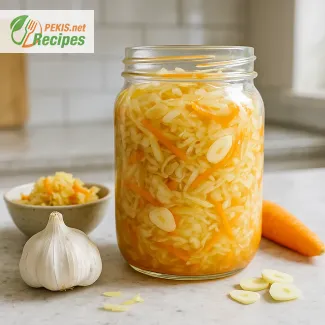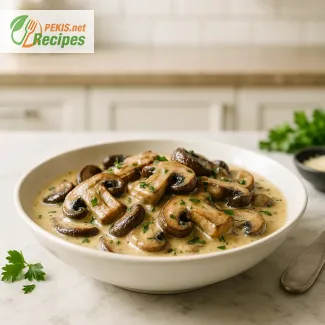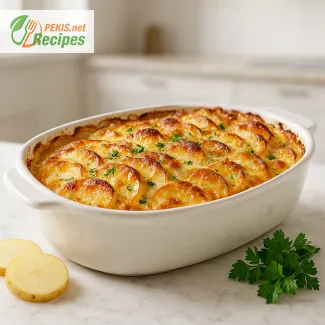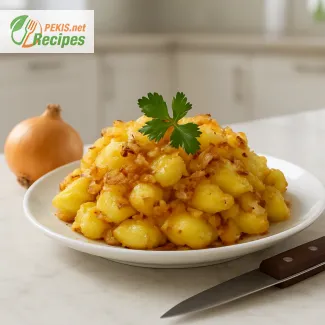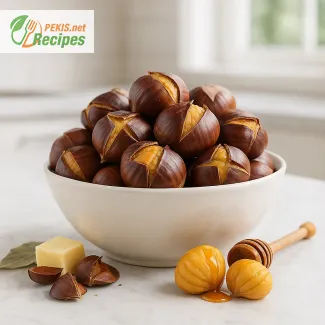Rich and creamy mashed potatoes with butter and cream deliver perfect comfort in just 40 minutes total (15 min prep, 25 min cook) for 4 servings. Made with starchy potatoes, softened butter, and warm cream, the result is smooth, silky, and full of flavor. This versatile side dish pairs beautifully with roasts, poultry, or grilled vegetables, and can be made ahead of time and gently reheated without losing texture. A touch of nutmeg and fresh chives adds warmth and aroma, making it an ideal companion for cozy winter meals.
Years spent in professional kitchens have taught the value of patience when working with simple ingredients like potatoes, butter, and cream. Getting the right texture in mashed potatoes isn’t about fancy tools but about understanding how warmth, timing, and care transform humble potatoes into something luxurious. There’s a quiet satisfaction in finding that smooth, silky balance between buttery richness and light fluffiness, especially when served alongside hearty winter dishes.
PEKIS – professional chef and recipe developer with over 25 years of experience in cooking and baking, specialized in European and international cuisine.
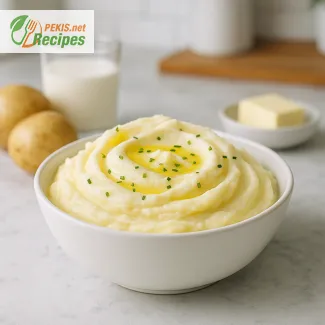
Whipped and silky mashed potatoes with a touch of indulgent butter
The secret behind perfectly creamy mashed potatoes for cozy winter dinners
When a bowl of creamy mashed potatoes lands on the table, it brings with it a sense of comfort that few side dishes can match. Smooth, buttery, and velvety in texture, this humble potato dish transforms any meal into something memorable. The secret lies in the balance between high-quality butter, fresh cream, and the right choice of potatoes—those with the perfect amount of starch to yield a silky finish without becoming gluey. When done right, it’s not just a side dish; it’s the heart of a winter feast, complementing everything from roasted meats to seasonal vegetables.
Potatoes have long been at the center of comfort cooking. In Europe, especially across Northern regions, they became a culinary staple after being introduced from South America in the 16th century. Over the centuries, every region shaped its own version—some light and fluffy, others dense and rich. The classic mashed potato with butter and cream that we know today evolved from French and English traditions, refined through generations of cooks who believed that a touch of fat and patience could turn something simple into something extraordinary.
The key is temperature and timing. Warm milk or cream should meet hot, freshly boiled potatoes to ensure a luxuriously smooth consistency. Cold dairy will only make the mixture stiff. The butter, preferably unsalted and softened, melds into the mash and gives it that unmistakable golden hue. For an even creamier touch, some chefs use a potato ricer or fine sieve, allowing each particle of potato to merge effortlessly with the butter and cream.
This dish is versatile—it can carry a rustic charm with a few small lumps or achieve a refined, restaurant-style finish when whipped to perfection. Either way, the result should have a melt-in-the-mouth feel, not a gummy one. Pairing it with roasted meats, like beef or pork, creates a harmony of flavors that defines winter dining.
Why you’ll love this dish
- Ultra-smooth texture that melts on the tongue.
- Rich buttery flavor with the right balance of creaminess.
- Pairs beautifully with roasts, grilled meats, or vegetarian mains.
- Simple ingredients, big comfort – a reminder of family dinners and cozy evenings.
- Perfect make-ahead side for gatherings and festive menus.
The influence of butter and cream
Butter gives mashed potatoes depth, that nutty richness that lingers after every bite. Cream, on the other hand, brings body and smoothness. When combined, they elevate the earthy flavor of the potatoes into something delicate yet indulgent. Adding just a hint of salt enhances the natural sweetness, while a pinch of nutmeg or white pepper introduces warmth.
Origin and tradition
Historically, mashed potatoes were not always creamy. Early European versions were often plain or mixed with broth. It wasn’t until the rise of French haute cuisine in the 18th century that butter and cream became the signature pairing for mashed potatoes, especially popularized by chefs like Antoine Carême. This luxurious style spread across Europe and eventually became a Sunday-dinner staple in countless homes.
Creative variations
- Add roasted garlic for a subtle sweetness and depth.
- Stir in cream cheese or sour cream for extra richness.
- Use olive oil instead of butter for a lighter Mediterranean touch.
- Fold in herbs like chives, thyme, or parsley for fresh aroma and color.
- For a festive twist, top with crispy shallots or grated parmesan before serving.
Storage and make-ahead tips
Mashed potatoes can be made ahead without losing their charm. Store them in an airtight container and refrigerate for up to 48 hours. Reheat gently in a saucepan over low heat, stirring in a splash of cream or butter to restore the original texture. For large dinners, keep the mash warm in a slow cooker on the “low” setting, covered with a thin layer of melted butter to prevent drying.
Pairing ideas and complementary dishes
Mashed potatoes are a natural companion to roasted or braised meats, but they also shine next to vegetables like buttered carrots, green beans, or roasted parsnips. The creaminess balances bold, savory flavors and enhances sauces beautifully.
If you love the comforting taste of creamy potatoes with hearty meat dishes, you can also try this related recipe available in English:
Best Classic Meatloaf Recipe – Easy & Juicy
The sensory balance
Every spoonful should deliver a soft, velvety texture followed by a buttery aroma and a mild sweetness that lingers. The contrast between hot, smooth mash and crisp, golden meat or fresh vegetables makes this dish an all-season favorite—but especially in winter, when its warmth feels like home.
Expert tips for perfection
- Always use starchy potatoes (like Russet or Yukon Gold) for fluffiness.
- Avoid overmixing; too much stirring releases starch and makes the mash sticky.
- Warm the cream and butter before adding them—temperature harmony is key.
- Season gradually and taste as you go; potatoes absorb salt differently depending on variety.
- For extra silkiness, push the mash through a fine mesh sieve once before serving.
This dish celebrates simplicity turned into luxury—a reminder that the best comfort often comes from the humblest ingredients.
- Peel the potatoes and cut them into evenly sized chunks about 3–4 cm (1.2–1.6 inch) thick to ensure even cooking.
- Place the potatoes in a large pot, cover with cold water, and add a pinch of salt. Bring to a gentle boil and cook for 15–20 minutes until the potatoes are tender when pierced with a fork.
- Drain the potatoes thoroughly and return them to the hot pot to allow excess moisture to evaporate. This prevents a watery mash.
- Warm the milk and cream together in a small saucepan over low heat (do not boil).
- Mash the hot potatoes using a potato masher or ricer until smooth.
- Add the softened butter and mix gently until fully incorporated and creamy.
- Gradually pour in the warm cream and milk mixture while stirring to reach the desired consistency—smooth and slightly fluffy.
- Season with salt, white pepper, and nutmeg to taste.
- Transfer to a serving bowl and sprinkle finely chopped chives on top (for garnish).
FAQ questionHow do I keep mashed potatoes from turning gluey?
Overworking the potatoes is the main reason they become gluey. Use starchy potatoes (like Russet or Yukon Gold), mash them while they’re still hot, and add warm butter and cream gradually. Avoid using a high-speed mixer, and if you want an extra smooth texture, pass the potatoes through a ricer first. The goal is to keep the starch from overdeveloping.
FAQ questionCan I make creamy mashed potatoes ahead of time?
Yes. Prepare the mash as usual, let it cool slightly, then store it in an airtight container in the fridge for up to 48 hours. When reheating, do it slowly over low heat and stir in a splash of warm cream or milk plus a bit of butter to bring back the original creaminess. Keeping the mash warm in a slow cooker on low also works well for serving.
FAQ questionWhich potatoes are best for creamy mashed potatoes?
For the creamiest result, use high-starch or all-purpose potatoes. Russet potatoes give a fluffy texture, while Yukon Gold potatoes provide a naturally buttery flavor and a slightly denser, velvety mash. Waxy potatoes (like red or new potatoes) tend to stay firm and don’t mash as smoothly, so they’re not ideal for this style.
FAQ questionHow do I make mashed potatoes richer?
Use a combination of unsalted butter and heavy cream and make sure both are warm before adding. You can also add sour cream, cream cheese, or extra egg yolk (in some versions) for more body. Seasoning is important too—salt, white pepper, and a pinch of nutmeg highlight the natural potato flavor.
FAQ questionWhy should the milk and cream be warm?
Cold dairy cools the potatoes and makes them stiff. Adding warm milk and cream helps the starch absorb the liquid evenly, giving a smooth, silky texture. It also prevents the mash from separating and keeps it easier to work with when serving larger batches.
FAQ questionWhat can I serve with creamy mashed potatoes?
They pair perfectly with roast chicken, beef, pork loin, meatloaf, braised short ribs, or grilled salmon. Because the mash is rich, it balances dishes with sauces, gravies, or roasted vegetables. It’s also ideal for festive or winter menus where you need a reliable, comforting side dish.
A bowl of creamy mashed potatoes with butter and cream captures everything comforting about homemade food. It’s simple, familiar, and deeply satisfying. Each spoonful blends the richness of butter with the smooth texture of potatoes, creating a balance that complements nearly every dish on the table. Whether served alongside roasted meats or seasonal vegetables, this classic side turns any meal into something memorable.
What makes it truly special is its versatility. With just a few adjustments—like adding roasted garlic, fresh herbs, or a drizzle of olive oil—you can create countless variations. It’s a dish that adapts easily to different occasions, from casual weeknight dinners to elegant holiday feasts. The combination of flavor and texture brings warmth to every plate.
The beauty of this recipe lies in the details: warming the cream, choosing the right potatoes, and mashing gently until the perfect consistency is reached. Each step enhances the natural sweetness of the potato while keeping the flavor clean and delicate. That’s the secret behind mashed potatoes that taste as good as they look.
Prepared with care, creamy mashed potatoes remain one of the most timeless and reliable sides in any kitchen. They embody the essence of comfort food—simple ingredients turned into something extraordinary through patience and precision. And when shared at the table, their buttery aroma and velvety texture bring people together, one warm spoonful at a time.
Allergens present in the recipe:
- Milk: present in butter, cream, and milk.
- Possible trace of lactose: depending on the type of dairy used.
Substitution tips for allergens and gluten:
- Replace butter with vegan margarine or olive oil for a dairy-free version.
- Use plant-based cream (e.g., oat or almond cream) instead of heavy cream.
- The recipe is naturally gluten-free if pure dairy products are used.
- Vitamin C (mg): 14 – supports immune function and collagen formation.
- Vitamin B6 (mg): 0.4 – aids energy metabolism and brain health.
- Potassium (mg): 620 – contributes to normal muscle and nerve function.
- Calcium (mg): 45 – supports bone strength.
- Iron (mg): 0.8 – helps in oxygen transport in blood.
- Magnesium (mg): 25 – supports enzyme and muscle function.
- Beta-carotene (mg): 0.3 – supports skin and eye health.
- Lutein (mg): 0.2 – protects against oxidative stress.
- Phenolic compounds (mg): 22 – help neutralize free radicals and reduce inflammation.
- Chlorogenic acid (mg): 18 – may aid metabolism and cardiovascular protection.
